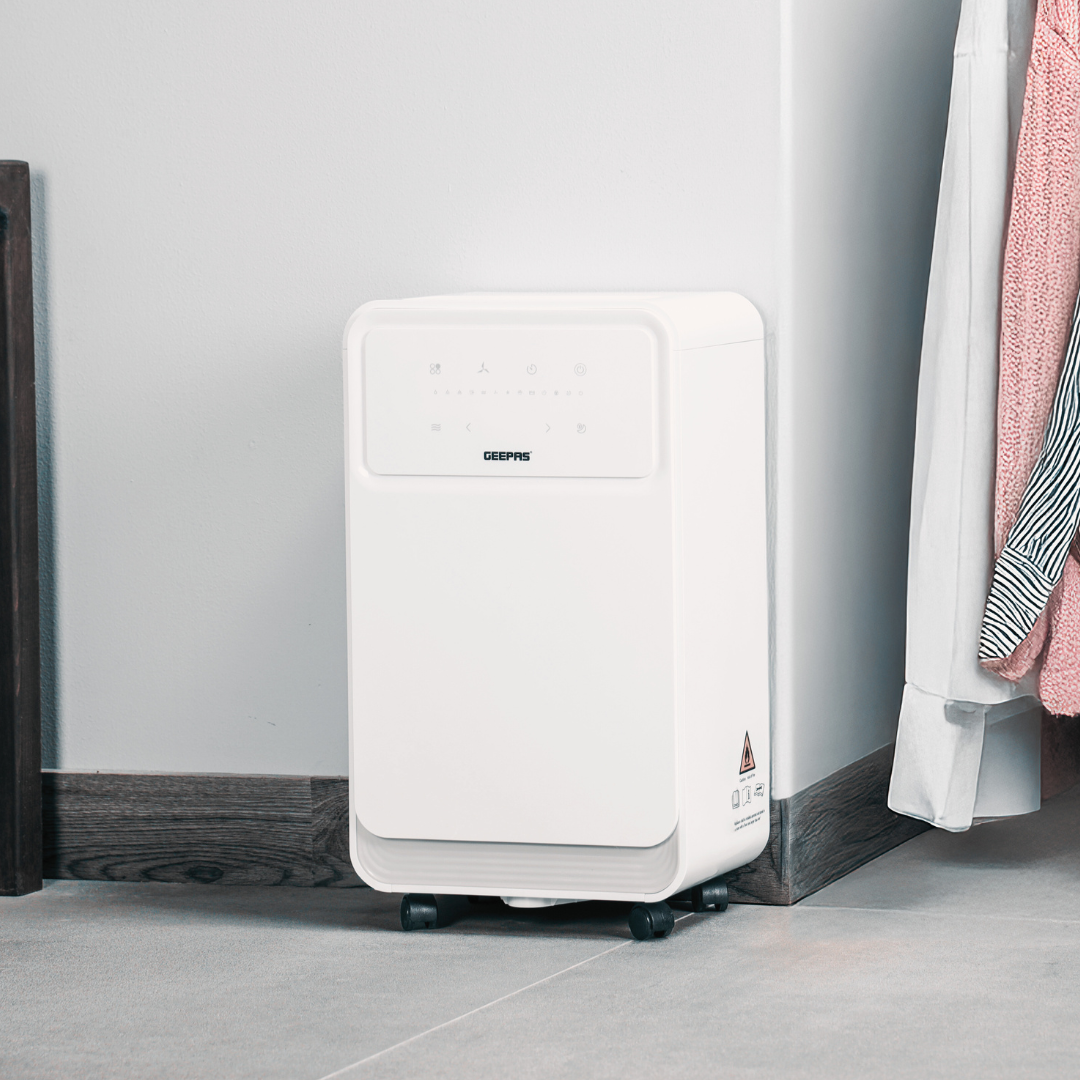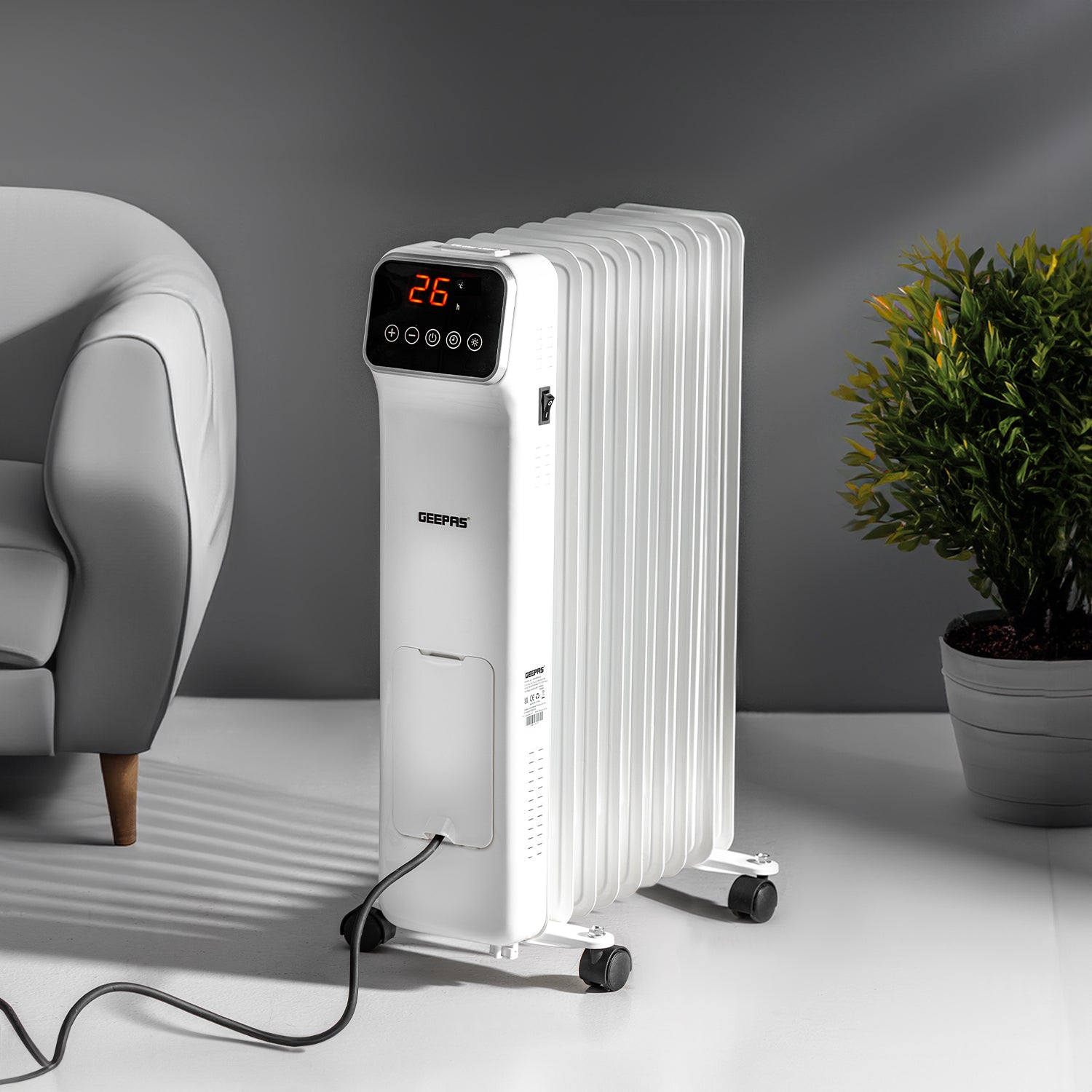As winter arrives, we naturally turn to indoor spaces for warmth and comfort. However, this retreat indoors often leads to increased indoor humidity, which can cause condensation on windows, mold growth, and a general sense of discomfort.
Using a dehumidifier is one of the most effective ways to manage moisture levels indoors, keeping your home dry, comfortable, and safe throughout the colder months. In this detailed guide, we'll explore how to use a dehumidifier to combat winter humidity, along with practical tips to enhance its performance and maintain an ideal indoor environment.
Why Does Humidity Increase Indoors In Winter?
Many people associate high humidity with warmer seasons, but winter often brings about elevated humidity levels indoors due to several factors:
1. Sealed windows and doors: Windows and doors are kept closed to retain heat, preventing natural ventilation that would normally carry moisture outdoors.
2. Indoor heating systems: Central heating, radiators, and space heaters warm indoor air, which increases its capacity to hold moisture and leads to condensation on cooler surfaces.
3. Increased Moisture-Producing Activities: Daily activities like cooking, bathing, and laundry release moisture into the air, which can build up without proper ventilation.
Benefits Of Using A Dehumidifier In Winter
Using a dehumidifier during winter brings multiple benefits:
- Reduces Condensation: Helps to keep windows, walls, and other surfaces dry, reducing the risk of mold and water damage.
- Improves Comfort: Keeps humidity levels within an optimal range, so the indoor air feels warmer and more comfortable without being clammy.
- Protects Against Mold: Minimizes the risk of mold and mildew growth, which is more common in damp environments.
- Improves Air Quality: Reduces the presence of allergens, dust mites, and other irritants associated with high humidity.
Step-By-Step Guide To Using A Dehumidifier Effectively In Winter
Follow these steps to optimise your dehumidifiers' effectiveness during the winter months:
1. Choose The Right Dehumidifier For Your Space
- Consider the room size: Dehumidifiers come in various capacities. A smaller room or bedroom may only require a 5-10 litre dehumidifier, while larger spaces like living rooms or basements may need a unit with a capacity of 20-30 litres.
- Portable vs whole-home units: Portable dehumidifiers are excellent for single rooms, while a whole-home dehumidifier is better for managing moisture throughout a large house or multi-level space.
2. Set The Humidity Level Correctly
- Ideal winter humidity range: Aim for a humidity level of around 30-50% during winter. This range is optimal for preventing condensation while maintaining comfortable air quality.
- Check humidity regularly: If your dehumidifier has a built-in hygrometer, monitor it often, especially after significant temperature fluctuations, or consider a separate hygrometer to monitor levels more precisely.
3. Place The Dehumidifier In An Effective Location
- Central placement: Place the dehumidifier in a central area of the room for optimal airflow and even humidity reduction.
- Away from walls and furniture: Keep it at least 6-12 inches from walls or large furniture pieces to allow for unrestricted air circulation.
- Near problem areas: If certain spots (eg. near windows or bathrooms) have noticeable condensation, position the dehumidifier close to them for targeted moisture control.
4. Adjust Fan Settings According To Humidity Levels
- Lower settings for constant operation: Use the lower fan speed when operation the dehumidifier continuously to save energy while still effectively managing humidity.
- High setting for rapid dehumidification: If you notice sudden condensation buildup, consider running the fan on high for quick moisture reduction.
5. Use In Conjunction With Your Heating System
- Dry air feels warmer: Since dry air retains heat better, a dehumidifier can help create a warmer environment, allowing you to reduce your thermostat setting and potentially save on heating costs.
- Use with humidistats: If your heating system has a built-in humidistat, monitor it to avoid over-dehumidification and maintain balanced humidity levels.
6. Regularly Empty The Water Tank or Use Continuous Drainage
- Frequent emptying: If your dehumidifier lacks a drainage hose, remember to empty the water tank regularly to keep it running efficiently.
- Continuous drainage option: For higher humidity rooms like basements, consider a model with a continuous drainage option so you don't have to worry about emptying the tank.
7. Maintain and Clean The Dehumidifier For Optimal Efficiency
- Clean the filter: Regularly clean or replace the air filter every 2-4 weeks. This ensures the dehumidifier maintains optimal airflow and operates efficiently.
- Check for frost build-up: In particularly cold rooms, the coils may frost over. Many dehumidifiers come with an auto-defrost feature, but if yours doesn't, turn the unit off temporarily to allow it to thaw.
Additional Tips For Using A Dehumidifier During Winter
When to run your dehumidifier:
- After cooking or showering: Kitchens and bathrooms tend to generate extra moisture. Running the dehumidifier after cooking or showering helps remove excess humidity in these areas.
- After snowfall or rain: Damp weather can increase indoor humidity, so running your dehumidifier after heavy snowfall or rain can help maintain a stable level.
- Early morning and evening: Temperature fluctuations are most prominent in the morning and evening, so running your dehumidifier at these times can effectively reduce condensation.
Features to look for in a winter-suitable dehumidifier:
- Auto-defrost: prevents frost build-up on coils, which is especially useful in colder rooms.
- Energy efficiency: Look for an energy efficient dehumidifier to help manage electricity usage and reduce energy costs.
- Noise levels: If you plan to use the dehumidifier in a bedroom or study, opt for a quieter model to minimize disruption.
- Portable design: Units with wheels or a handle are easier to move, allowing you to use the dehumidifier in different rooms as needed.
Identifying When You Need A Dehumidifier In Winter
If you're unsure whether a dehumidifier is necessary, look for these telltale signs:
- Persistent condensation: Excessive condensation on windows or glass doors, particularly in the mornings.
- Damp, musty smell: Persistent odors, especially in basements or closets, are usually due to trapped moisture.
- Visible mold growth: Black spots on walls, ceilings, or even furniture can indicate high humidity.
- Peeling wallpaper or paint: Wallpaper that peels or paint that bubbles is often due to moisture trapped beneath the surface.
Benefits Of Maintaining Optimal Humidity With A Dehumidifier
- Enhanced comfort: Balanced humidity feels warmer and helps maintain consistent indoor temperatures.
- Healthier indoor air quality: Lower humidity levels reduce mold spores, dust mites, and allergens, contributing to a healthier living space.
- Protects home and belongings: Keeps wooden furniture, flooring, and walls safe from the damaging effects of excess moisture.
- Energy efficiency: Allows you to lower the thermostat by maintaining warmer-feeling air without the excess moisture.
Using a dehumidifier in winter can significantly enhance indoor comfort, protect your home, and create a healthier environment.
Whether combating condensation, mold, or just creating a cosy space, a dehumidifier is an invaluable tool in maintaining an ideal indoor climate. By following these steps and adjusting your settings as needed, you can enjoy the warmth of winter without the drawbacks of high indoor humidity.





